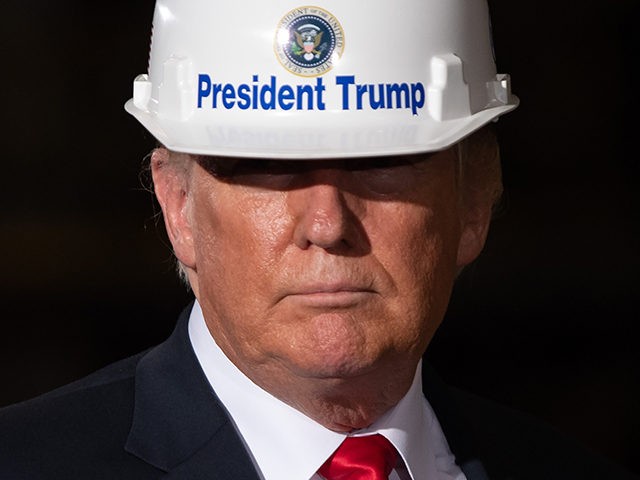The first three months of the year saw wages for manufacturing workers rise at the most in over a decade.
The employment cost index, a measure of wages and benefits paid by businesses, for manufacturing workers rose by 0.9 percent in the first quarter, Labor Department data released Tuesday showed. The salary and wage component rose even more–by a full percentage point.
The last time manufacturing saw quarterly wage gains that high was in 2008, when wages also rose 1.0 percent in the January through March period.
Compared with a year ago, manufacturing wages were up 2.9 percent in March. That’s the biggest 12-month gain since March of 2003, when wages rose 3.2 percent.
By Barack Obama’s final year in office, manufacturing wages were rising an average of just 0.625 a quarter.
Very low inflation means that unlike past gains in worker pay, these have not been eaten away by higher prices. Prices in March were up just 1.5 percent compared with year-earlier levels, which makes the real wage gain 1.4 percent. Back in March 2003, prices were up 2.5 percent. So most of the paycheck growth went to higher prices. In March of 2008, the situation was even worse: 3.1 percent inflation meant workers were actually losing ground despite growing paychecks.
There’s another reason to think that the first quarter of 2019 may have been better than either 2003 or 2008. In both those periods, unemployment in the manufacturing industry was quite high, 6.8 percent in 2003 and 5 percent in 2008. When unemployment is high or rising, lower paid workers with less tenure are often laid off before more experienced, higher paid workers, as a result average wages in the employment cost index can climb even when workers are losing their jobs. In fact, it usually does.
But unemployment is now very low. In the manufacturing sector, it is just 2.9 percent. So there is no upward pressure being created by layoffs. In fact, it is quite the opposite. Manufacturing sector employment is expanding, and it is likely that manufacturing businesses are hiring less experienced workers who can be paid less than incumbents. So the very good numbers for the first quarter may be even better than they appear.
The revival of American manufacturing was a key campaign promise of Donald Trump in the 2016 campaign. Tuesday’s data suggests that Trump is making good on that promise.
When analyzing the employment cost index to see how economic conditions are affecting workers, it makes sense to focus on the wages and salaries component. The cost of benefits, which include employer-subsidized health insurance, can rise without workers seeing any actual improvement to their lives or financial situation.
It is not just manufacturing employees seeing rising wages. Wages for all workers rose 1.1 percent in the first three months of 2019. Compared with a year ago, wages are up 3.0 percent. Wages in transportation, which includes truckers, rose 1.6 percent in the quarter and are up 4.6 percent for the year.
The overall employment cost index climbed 0.7 percent in the first quarter, matching the fourth quarter’s growth. Both the wage and benefits component also rose 0.7 percent. Compared with a year ago, the index was up 2.8 percent. While that is slightly less than the fourth quarter’s 2.9 percent, it is an improvement in real terms because inflation was running a quarter of a percentage point higher at the end of 2018.

COMMENTS
Please let us know if you're having issues with commenting.